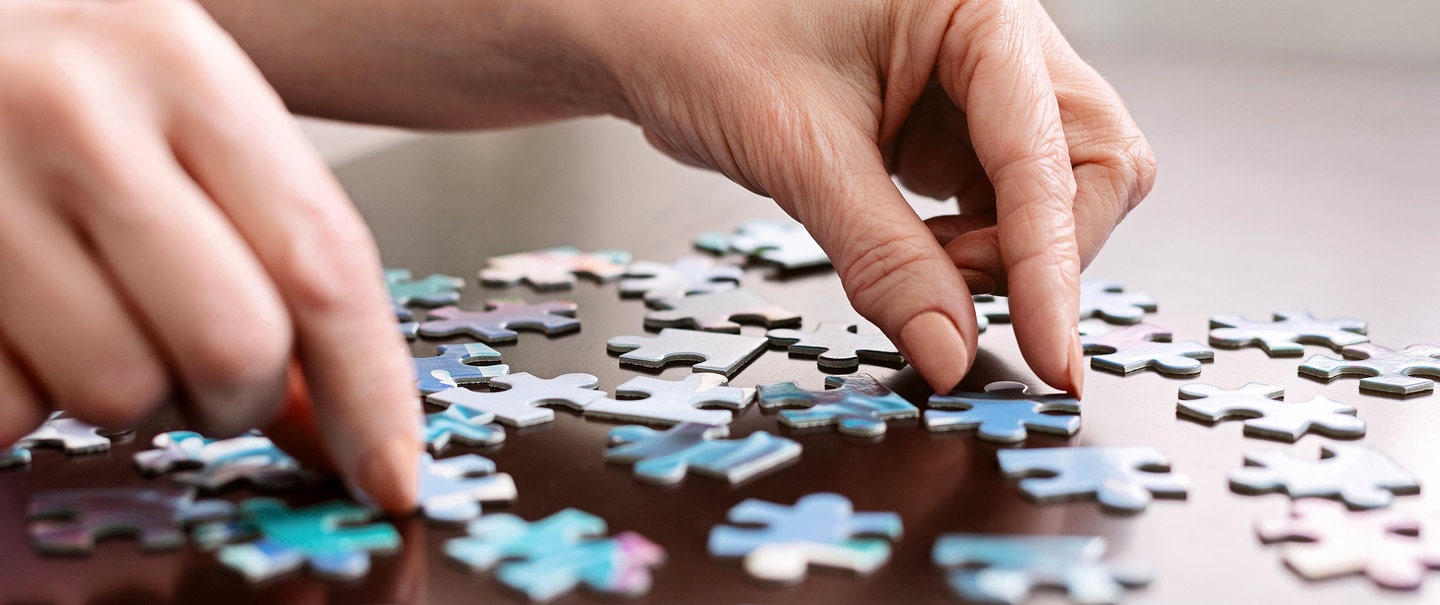A jigsaw puzzle is a tiling puzzle that requires the assembly of many small interlocking and tessellating pieces. Each piece is a small part of a picture; when complete, a jigsaw puzzle produces a complete picture.
The Origins of Jigsaw Puzzles
Jigsaw puzzles were originally created by painting a picture on a flat, rectangular piece of wood, and then cutting that picture into small pieces with a jigsaw, hence the name. The first jigsaw puzzles were sold around 1760 by John Spilsbury, a Londom mapmaker and engraver. Since the jigsaw puzzles have come to be made primarily on cardboard.Typical images found on jigsaw puzzles include scenes from nature, buildings, and repetitive designs. Castles and mountains are two traditional subjects. However, any kind of picture can be used to make a jigsaw puzzle; now it's even possible to turn personal photographs into puzzles. Also during recent years a range of jigsaw puzzle accessories including boards, cases, frames and roll-up mats has become available that are designed to assist jigsaw puzzle enthusiasts.
How a Jigsaw Puzzle is MadeMost modern jigsaw puzzles are made out of cardboard, since they are easier and cheaper to mass produce than the original wooden models. An enlarged photograph or printed reproduction of a painting or other two-dimensional artwork is glued onto the cardboard before cutting. This board is then fed into a press. The press forces a set of hardened steel blades of the desired shape through the board until it is fully cut. This procedure is similar to making shaped cookies with a cookie cutter. The forces involved, however, are tremendously greater and a typical 1000-piece puzzle will require a press which can generate upwards of 700 tons of force to push the knives of the puzzle die through the board. A puzzle die comprises a flat board, often made from plywood, which has slots cut or burned in the same shape as the knives that will be used. These knives are set into the slots and covered in a compressible material, typically foam rubber, the function of which is the ejection of the cut puzzle pieces. New technology has enabled laser-cutting of wooden jigsaw puzzles, which is a growing segment of the high-end jigsaw puzzle market.

